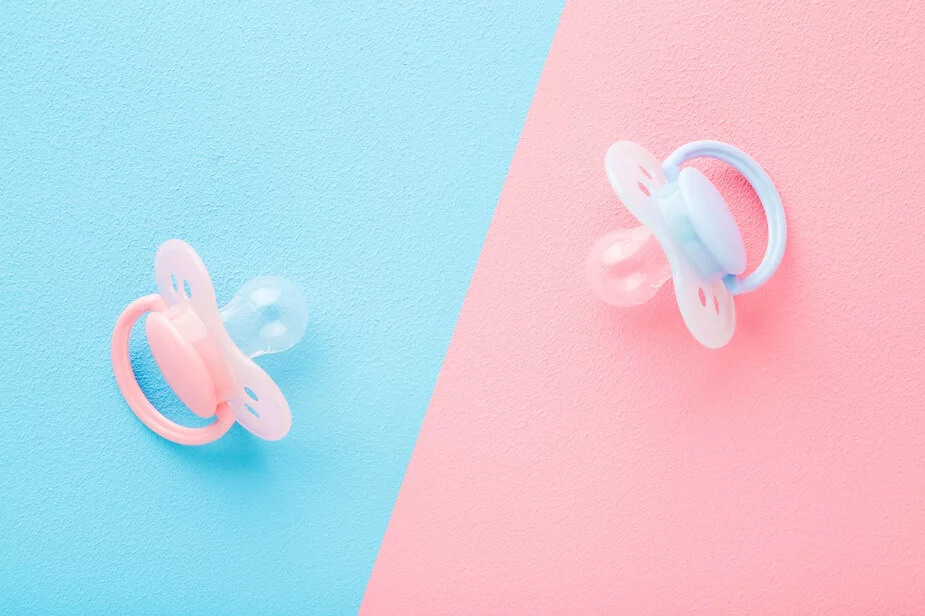When you have done everything to try and satisfy your baby and nothing seems to work, just soothing your child with a pacifier can sometimes do the trick! Ask most parents, and they can tell you that they have at least thought once about using a pacifier. Whether or not it is healthy to use pacifiers to soothe your infant has been an ongoing debate among health experts for quite a while. We are going to walk you through the pros and cons and provide a bit of information. Ultimately, the choice is up to each individual parent whether or not to use a pacifier.

Contentment – Ah! Let's face it; this is the real reason we use a pacifier to soothe a child. Babies have a strong sucking reflex and have been shown even to suck their thumbs in the womb. Sucking is a reflex that comes naturally and is necessary for feeding and taking in nutrients, and satisfying that oral fixation between feedings is key. It certainly can help parents calm their nerves as well!
There are drawbacks, though. These need to be considered when deciding whether or not to use a pacifier to soothe your child (1). So, here is a list of pros and cons.
There are two basic types of pacifiers: orthodontic and non-orthodontic (conventional). The non-orthodontic is an older style and has a uniform bulb-like tip. The orthodontic is shaped more like a natural nipple and is built to accommodate the infant's "tongue-thrust" motion that helps pull the milk from the nursing parent's breast. This type of pacifier has a typically square shape and is flatter (2, 3). The pacifier can be made of silicon rubber, soft plastic, or latex. Silicon is better as this material is a lot smoother than the others and tends to harbor fewer germs (2).
When determining the best pacifier for your child, please consider that orthodontic pacifiers are less likely to lead to malocclusions (misaligned teeth) than the conventional alternative. Conventional pacifiers have been noted to contribute to open bites when used much longer than recommended. An open bite can be anterior or posterior. An anterior open bite is when the upper and lower front teeth have a gap between them, even when the mouth is closed. The posterior open bite is when the back teeth do not touch when the mouth is closed. These malocclusions can cause various issues if not prevented or corrected. Open bite teeth misalignment can cause (2, 3):
"Oh no! No pacifier? How will we cope?"
Around the time of your child’s first birthday, talk with our dental professionals about recommendations of when to start weaning your child from the pacifier. Our Jungle Roots team can help you with tips on doing this most anxiety-ridden task! Discussing the best approach can make this easier for you and your child.
Some of you may want to go cold turkey… eek! Most pediatricians feel the easier path is gradually removing the pacifier from the picture. The pacifier should never be used all day when the child should be developing their language skills. A child is starting to form words and talk at age one, but having a pacifier in their mouths can defer this until later. Offering it to your baby at bedtime or naptime is certainly OK. It can soothe them and help them fall asleep (4).
It seems as though most toddlers stop using their pacifiers on their own between the ages of two to four, but finding alternatives to using a "paci" or a "binky" should be a priority during this time anyway. Find something else that provides comfort; rocking, a teddy bear, or a favorite blanket that can help them give up the pacifier and offer security through their nap or overnight (4).
Have you heard of the "Pacifier Fairies?" Some families have thrown parties where it is an event to throw away the "binky" or place it where the Pacifier Fairy can take it away during the night, much like the Tooth Fairy visits. There are many creative ideas floating around out there to help your toddler give up the pacifier once and for all (4)!
Pacifier use is up to you as a parent. Just be assured that if you choose to soothe your baby by using one, there is minimal risk of dental issues unless they can't be weaned from it after a few years. Weigh the pros and cons and observe your baby's needs. You know them better than anyone!
Contact our office for an appointment to start your baby on a positive path to good oral health! We have a supportive staff and are here for you to discuss your child's needs or questions you may have about any dental topic. We can provide dental and orthodontic services to you and your child in one location as your "dental home." Taking the stress out of coming to the dentist is our goal, and we want the environment to be fun and inviting- a place you and your child will be eager to visit. We look forward to seeing you!

At Jungle Roots Children’s Dentistry & Orthodontics, we strive to provide the highest comprehensive pediatric and orthodontic dental care in a unique, fun-filled environment staffed by a team of caring, energetic professionals. We believe the establishment of a “dental home” at an early age is the key to a lifetime of positive visits to the dentist.
